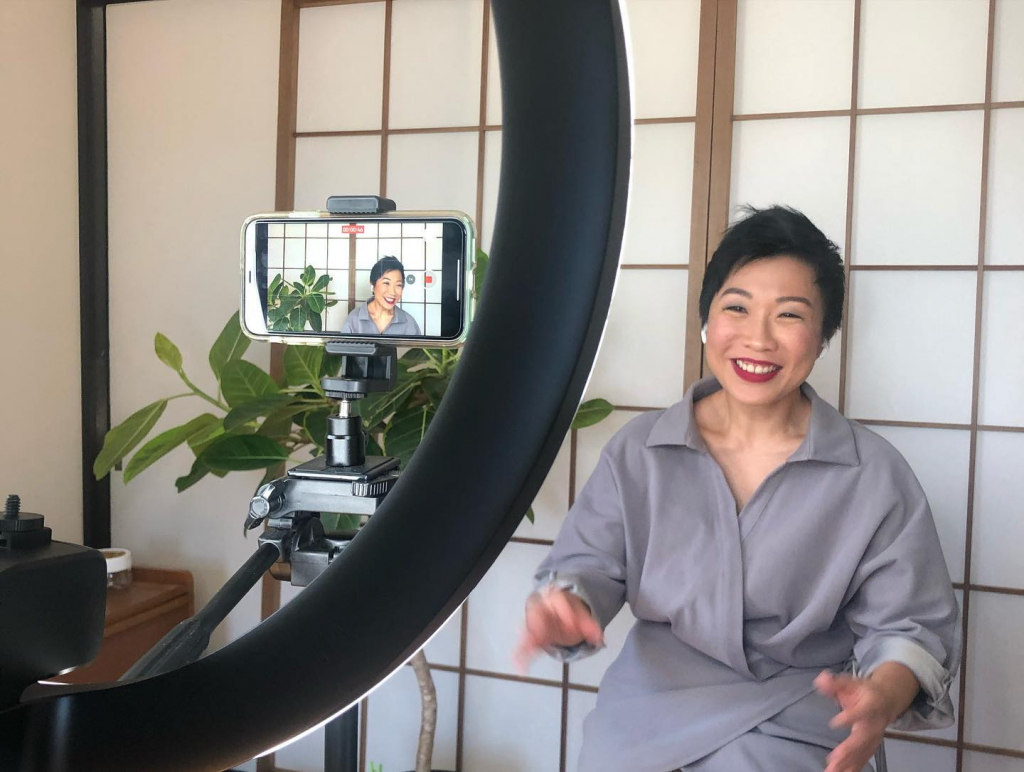Sex educator June Low has a simple message for parents: if you’re leaving it up to schools to teach your child about sex, then you are shirking your responsibility. Considering that sex is central to life, it’s a big responsibility. So Low is doing what she can to help by providing courses and free resources that teach sexuality together with other knowledge and skills for a successful life.
Low has just released on various social media a series of content in which she collaborated with a range of artists to explore 20 sex-related topics through multiple media. In one video, textile artist Kate Sechrist shares how to make a “uterus bag” – a cloth pouch for storing period products that fold out into the shape of a uterus.
“To teach about periods with dignity, to teach about menstrual supplies and storing menstrual supplies – so many lessons are in that one period bag,” Low explains.
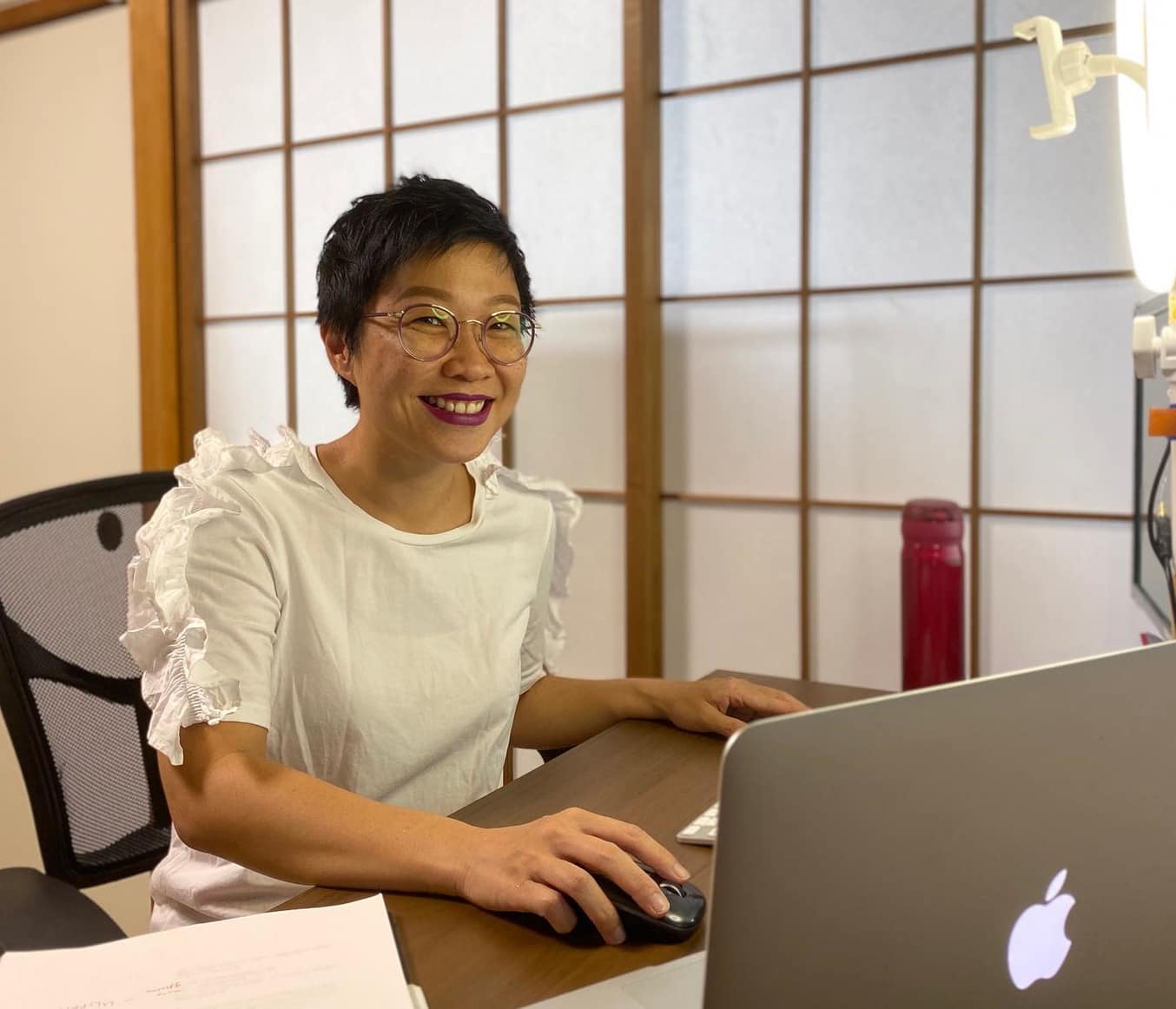
June Low at her home in Kyoto
June is from Malaysia, where for about four years she taught sexuality education lessons to kids on the vast oil palm plantations there. She is now in Japan, researching sex education at Kyoto University’s School of Public Health, and holding online classes in English for kids living here. Her new social media series is funded by her win in the “120 Under Forty” program for a new generation of family planning leaders that is backed by the Bill & Melinda Gates Institute, Johns Hopkins and Bayer.
Sex within the context of our lives
Low teaches comprehensive sexuality education (CSE). It’s a far cry from the sex education that Japanese schools are teaching, and from what most parents think of as sex education, which is typically reproduction, risks and disease. It puts sex within the context of our lives, our choices, our desires.
“You teach children [that] you put the penis into the vagina, sperm comes out, joins to the egg and makes a baby. But what about before that? What makes someone want to put a penis into a vagina in the first place?,” she says.
“Sex education is extremely political”
Her work is based on the current UNESCO International Technical Guidelines on Sexuality Education (see chart below), which acknowledge CSE’s effect on the healthy development and overall wellbeing of children and adolescents. It teaches about sex and relationships without stigma, “in a manner that is positive, affirming, and centered on the best interest of the young person.”

Did you know that topics like consent, decision-making and media literacy are part of the comprehensive sex ed. curriculum?
“To normalize sex for young people is to teach it in a way that they understand,” says Low. She gives the example of teaching the sexual response cycle, or arousal, to a class of 8-11 year olds the previous day: it’s like jumping into a swimming pool.
Low: “Think about that feeling when you’re mid-air and you’re about to land in the water. What do you feel? Do you get excited?
Kids: “Yeah.”
Low: “What about before you jump?”
Kids: “Yeah.”
“That excitement that we feel – all of the physiological symptoms – a rush (of blood) to the face, heart beating faster, breathing faster, all of that is sex,” she says. “It’s human response.”
She continues with the analogy: “Orgasm is like diving into the water.” Which leads to bungee jumping as a description of? Multiple orgasms.
Instruction is based on sexual intercourse for the purpose of reproduction, and the above section comes after the kids have studied topics that include in vitro fertilization and the United Nations’ Convention on the Rights of the Child.
The sexuality education guidelines say they place “sexuality education within a framework of human rights and gender equality.” CSE is considered essential to achieving the U.N.’s sustainable development goals (SDGs) and recognized as contributing “to the formation of a fair and compassionate society by empowering individuals and communities, promoting critical thinking skills and strengthening young people’s citizenship.”
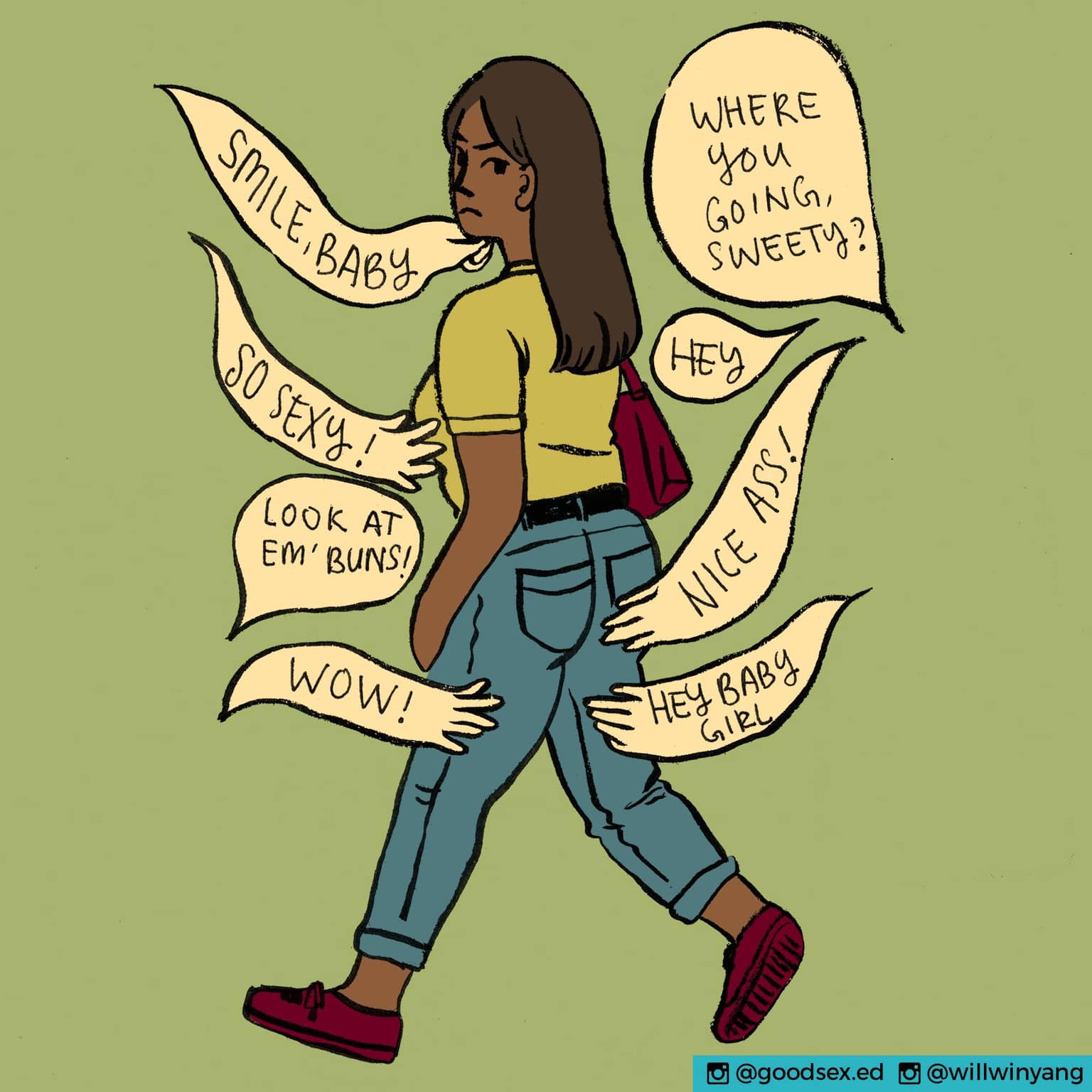
From June Low’s Facebook page: “Brought to you by Willwin Yang, an illustrator based in Kuala Lumpur, she encapsulates the essence of getting catcalled on the street with her art. Catcalling is not a compliment and rather, it makes the individual feel unsafe. From a young age, women are taught to act and behave a certain way to avoid attention from men. We think that men should be educated from a young age not to objectify women and to treat them with respect!”
The guidelines were created in 2009 and updated in 2018. With so much potential win-win from CSE, it makes you wonder why only a handful of countries are teaching it. Like Japan, many governments don’t want to be seen as encouraging young people to have sex, so they don’t provide key information such as how to use condoms and where to get them. “Sex education is extremely political,” Low says.
Online sex education is the way of the future
It is also hard to teach sex education well. After all, most adults have never been taught good sex education themselves. Teachers need to be sex positive, unembarrassed, informed, sensitive to students’ backgrounds and sensibilities and able to stop kids from making fun of each other. These requirements, and the dynamics of the sex education classroom, lend themselves to online teaching, Low says; “I think it’s the future.”
The privacy aspect “is huge,” she says. “Kids are joining from their own bedrooms, so they feel safe. They are in their own space. No-one’s making fun of them.” Even when she has taught classes online to international schools in Tokyo, students have sent her questions via the chat function so that the classmates around them don’t know who the queries are from.
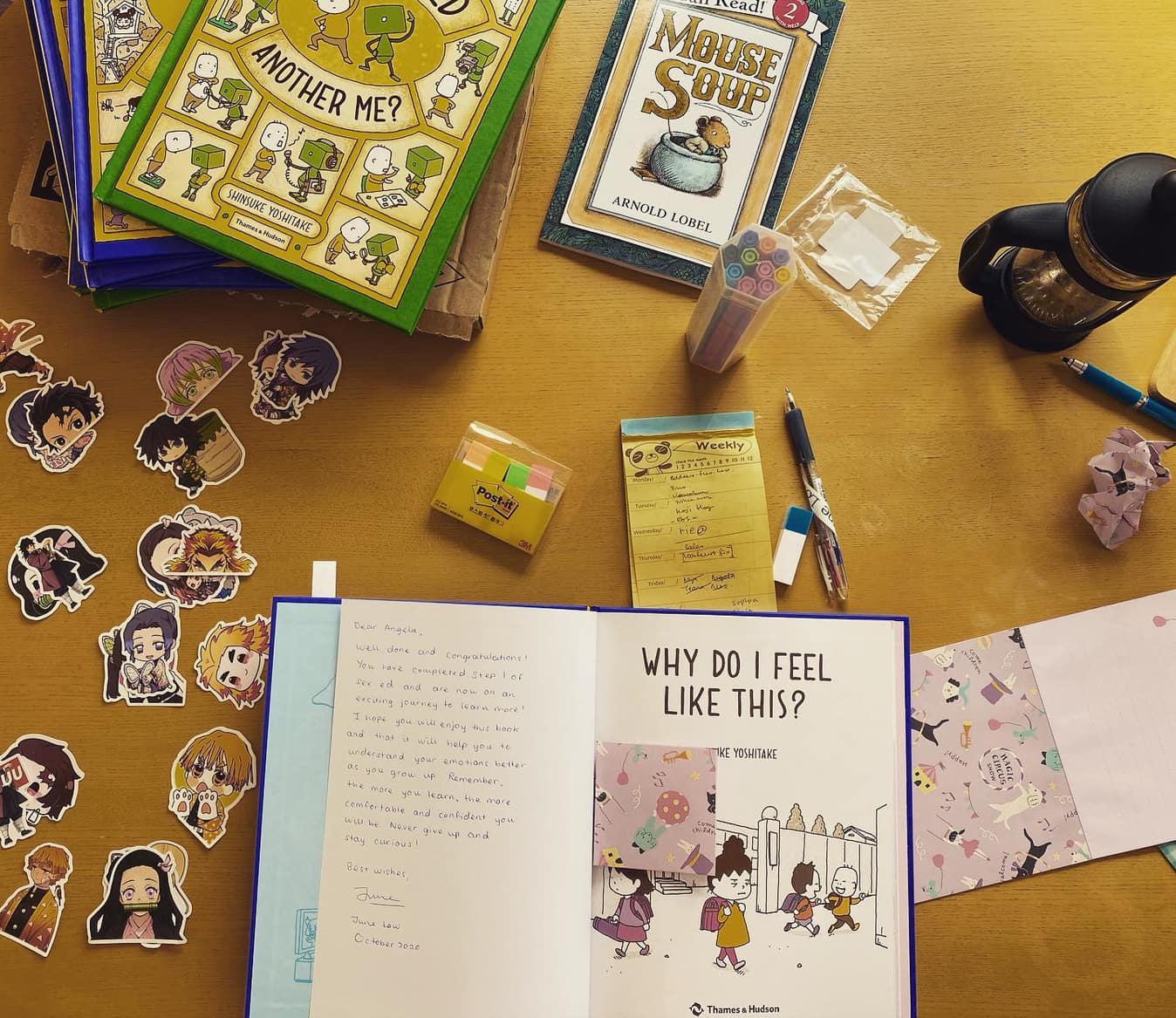
Low preparing graduation gifts for students who have completed Step 1 of her 16-week Sex Ed course. “Like sex ed, gifts should also be responsive to needs,” she says.
The mute function helps use precious class time more efficiently, Low says. “If everyone is making noise, I don’t spend half an hour saying ‘OK everybody, calm down.’ I mute everybody and I get on with it.”
Amid a shortage of CSE educators worldwide, online teaching will allow them to reach a wider audience. But the best part of online CSE, Low says, is the regularity of lessons.
The kids in her Japan-based class “have grown used to not just having a class on this day at this time, but having somebody to talk about their problems with and to talk about the week’s happenings with…That group of students is their support network.”
“Japan sex education is very, very, basic”
Unlike sex education taught at school in just a handful of lessons within a broader, life skills subject, the extra time available in regular sex education lessons allows the class to revisit topics, study current affairs and, most importantly to Low, to ask questions.
Being responsive to young people’s needs within sexuality education is the focus of her research. It looks at what young people in Malaysia are asking in online sex-related discussion forums. “This is what I have found. We have international guidelines on what you should teach. The questions that fall under the recommended curriculum in those guidelines make up about 20% of the total queries. 80% is a distinct content that is not covered in the guidelines.”
It is the unavoidable consequence of politically negotiated guidelines, she says. “No government will sign off on what appears to be a manual teaching kids how to have sex.” That, of course, includes the Japanese government.
“Japan sex education is very, very, basic,” Low says. It doesn’t teach anything about sexual pleasure. Lessons on consent are missing. It’s a big rape culture here, as well. An extremely sexist society, that’s not being discussed.”
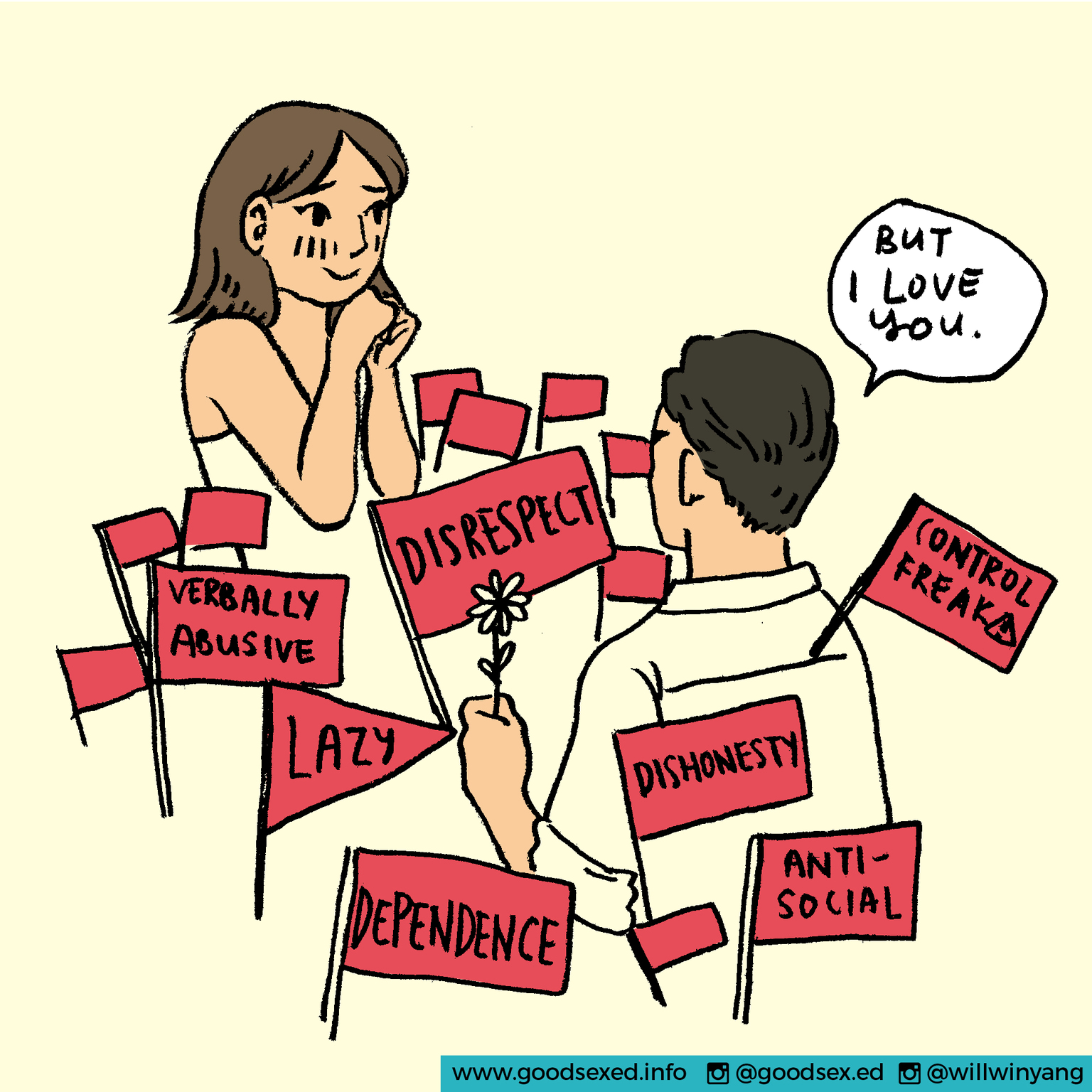
From June Low’s Facebook Page: The red flags of a toxic relationship. “Examples of red flags are: They never apologize for their behavior – you become their scapegoat. They gaslight you by denying the truth and making you question your sanity and reality. They don’t respect your boundaries and try to invalidate them. They don’t communicate – silent treatment or changing the subject. They control your every behavior without rational – where you go, how you dress, who you meet. The biggest red flag – ABUSE. Any form of abuse is not only a red flag but a huge flashing neon light telling you to GET OUT.”
“I think the road to getting good sex education into schools is a long one. That’s the reality. So if parents are sitting around waiting, they are being very irresponsible, especially if their kids are already teenagers.”
“Kids’ development at every age matters so much. They change so much in the teenage years. (If) you miss that window of opportunity to really guide them in the right way, then it’s hard,” she says.
Advice for parents
Low advises parents to try to understand sexuality education and to not be afraid of it. Studies in the U.K., she says, have shown that kids who have good sex and relationships education become more balanced individuals, perform better in school, have more fulfilling relationships, and their confidence makes them more employable.
Listen to your kids and, in an age-appropriate way, talk to them frankly and openly about sex, bodies, relationships and rights. Use the correct physiological language when you do so. Use books and online resources like her own to help you teach and your child learn.
And talk to other parents about sex education in similar terms. “Parents have such power over the decisions that other parents make and in normalizing this subject,” she says. “Sex education does not stand alone. It is a network of people working together to get the thing going. (With) schools, educators and health care providers.”
Simply placing the blame for lack of good sex education on the school system ignores our individual responsibilities and our ability to instigate change, she says.
Check out the resources available on Low’s social media channels:
- Good Sex Ed FB: www.facebook.com/gsewithjunelow
- Good Sex Ed Instagram: www.instagram.com/goodsex.ed
- Good Sex Ed Tik Tok: @gse4u @goodsex.ed
- Website: www.goodsexed.info
- Popek Popek Youtube: www.youtube.com/PopekPopek

